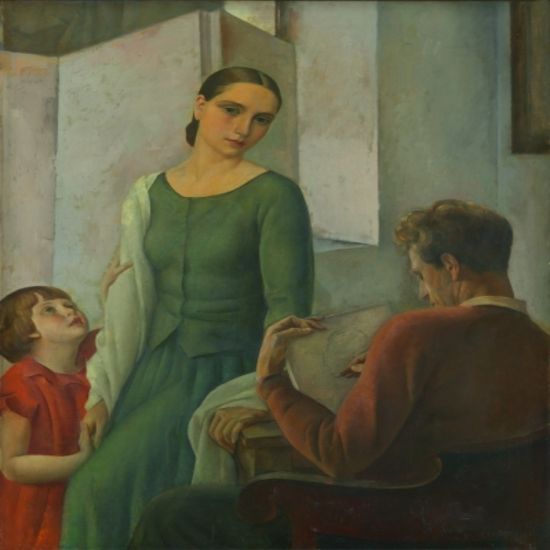Anto Carte, a great Belgian artist
Recurring themes can be seen in Anto Carte's works. At the beginning of his career, he often represented still lifes, landscapes, and realistic portraits such as the oil on canvas Portrait of Elegant dating from 1913. Then, he starts to find his style. Naturalist and symbolist influences are clearly noticeable when he paints peasant or worker scenes with characters with indifferent and blasé faces such as The Heat, an oil on canvas from 1914, or the oil on cardboard Peasant and his Horse from 1919. From the 1920s on, he represented religious scenes as in the Pieta color lithograph or in the Study for San Sebastian, a mixed technique of 1932. During this same decade, Anto Carte also began to paint street musicians who retain their sinister appearance. Such is the case of the monotype The violinist in the snow of 1924 or the oil on canvas The blind musicians of 1927.
However, Anto Carte refuses to belong to a school. At a time when abstract art and avant-garde movements were booming, he formed the group Nervia in 1928 with Leon Eeckman and Louis Buisseret, advocating a return to realistic, naturalist and expressionist painting.
Anto Carte died in 1954 in Ixelles. Abandoned for a long time, Anto Carte's works have regained a particular attraction for collectors in recent years. In fact, his coast is clearly increasing.
Sophie Couturier
Illustration: Louis Buisseret, In the painter's studio,1928, Royal Museums of Fine Arts of Belgium, Brussels
If you own an Anto Carte painting, our specialists are at your disposal to give you a free estimate and to propose you the best sales solution.
Ask for a free estimate of my Anto Carte painting


